Deer Antler Growth
Antler growth in deer really is phenomenal! In fact, deer antlers are among the fastest growing tissues in the animal kingdom. They grow as much as 1/2-inch per day during peak antler growth! Of course, the amount of antler material a buck grows depends upon nutrition, genetics, and age. Let’s look at some factors that effect deer antler growth.
Actively growing antlers are covered with a living tissue called velvet; because it really looks and feels like velvet fabric. A buck’s antlers are both extremely delicate and sensitive to the touch during antler development. Bucks are not aggressive towards each other during the antler growing period. However, this is still the time when most deer antler damage occurs.
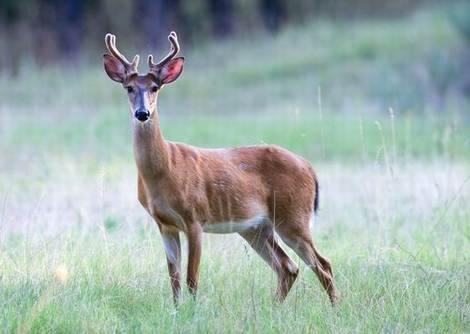
Growing antlers are sensitive. As a result, disputes between bucks at this time are handled by bucks standing on their hind legs and swinging their front legs in the same manner than doe deer use to fight and establish dominance. This technique allows groups of bachelor bucks to sort things out, so to speak. More importantly, it keeps their all-important headgear intact.
Key factors of annual buck antler growth in whitetail include:
- Age of buck
- Nutrition available to the buck
- Stress (physical) from prior breeding season
- Genetic potential for antler growth
- Older bucks typically shed & start growth first
Video: Whitetail Buck Antler Growth
Antler Growth in Bucks
White-tailed deer antler growth usually begins during the month of March or April. Buck antler development ceases by August or early September. In most cases, typical deer antlers begin growing out a buck’s head in a backward motion then quickly change direction and sweep forward as we commonly know.
So how long does it take for a buck to form hardened antlers? The following photos illustrate antler growth for a single white-tailed buck in Texas (in a research facility) from March through September. Take a look at these stages of antler growth. It all happens relatively fast!
Antler Growth Photos by Month
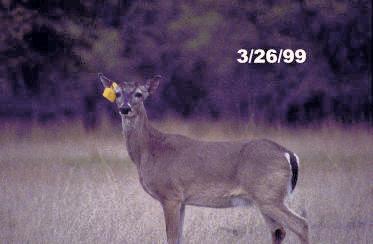
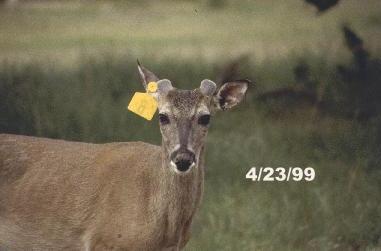
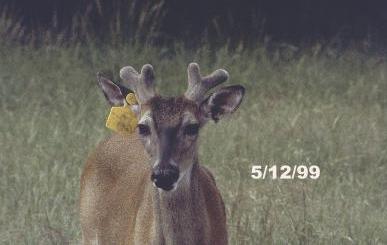
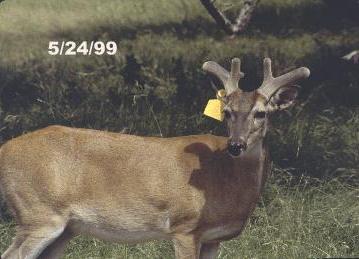
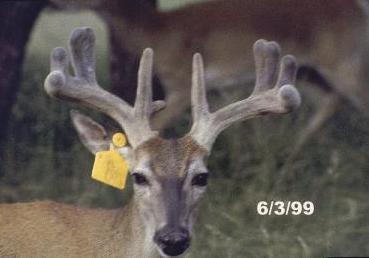
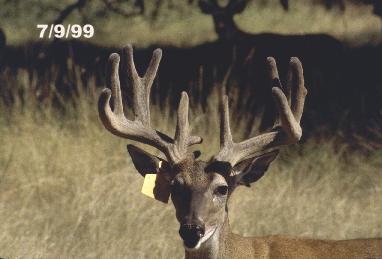
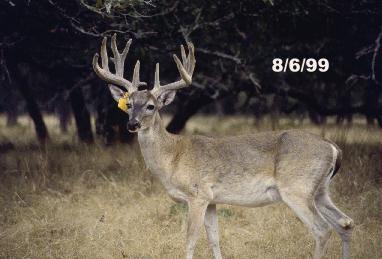
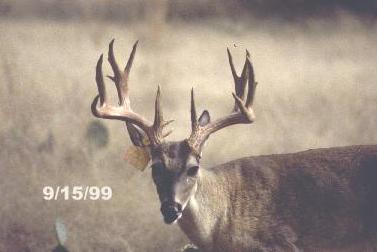
Antler Growth Increases with Age
Whitetail bucks drop or shed their antlers during the late winter and early spring. Fortunately, they grow them back annually. Antler growth in bucks generally increases annually as a buck ages, gets older. Substantial increases in antler size (and score) can be observed as a buck goes from 1 to 5 or 6 years of age.
White-tailed deer do not complete skeletal growth until about 3 years of age. During this time, bucks put a lot of the same materials that are used for the growth of antlers into long bones and other parts of their skeletal system. This one of the primary reasons that a buck’s antlers often make a noticeable jump from 3 to 4 years old — skeletal growth is complete and many of the antler growing supplies are now stored in those bigger bones.
Environmental Effects on Deer Antler Growth
The annual cycle of antler growth is amazing. I and hunters like myself enjoy watching particular bucks from year to year. Often times, antler configuration makes it possible to ID most bucks in subsequent years. A whitetail buck will typically show an increase in antler growth until at least age 6, possibly older. Most of the potential will be realized by 5 years of age.
Nutrition plays a role in a buck’s antler size. Bucks that have good, stable food sources provided by high quality habitat will produce better antlers than those of the same age that lack adequate nutrition. To take it further, precipitation plays a role in annual antler growth, especially as you go West in the whitetail’s range. High quality habitat can turn into mediocre habitat when it’s dry and protein-rich foods are not available.